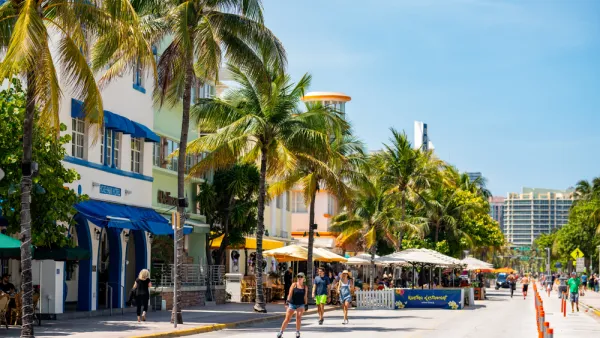Musk claims the tunnels could ease traffic and "be an example to the world," but experts caution that underground work in Miami is expensive and unpredictable.

In "yet another example of Musk’s perpetual grift of making empty promises to city leaders," writes Alissa Walker, the Tesla CEO is floating the idea of building car tunnels under the city of Miami through his tunnel-digging subsidiary, the Boring Company. Critics question the efficacy of underground tunnels in a city known as "the sinkhole capital of the United States," pointing to the "astronomical" costs of the rare few tunnels that have been built in the city. A Port of Miami tunnel that runs for less than a mile through a shallow channel cost roughly $1 billion to build, and it's unclear "whether or not the Boring Company has truly been able to cut tunneling costs."
Cost aside, another major issue facing any underground projects in Miami will be legal liability and the highly unpredictable effects of digging tunnels through unstable ground. "The ground beneath Miami is a highly dissolvable limestone karst that’s filled with cavities and caverns just like the sea floor," writes Walker, making it difficult to predict how a tunnel might affect the land and buildings above it. "Because part of the issue with the changing of the water table is that it won’t be a direct cause and effect — 30 blocks away is what is going to sink," says Mika McKinnon, a field geophysicist and disaster researcher, questioning Musk's plans for assessing legal liability. "This is not a feasible project without sinkholes, so what will they do when they get sued?"
McKinnon warns that investing in Miami's infrastructure may also be a lost cause in the long term thanks to the ravaging effects of climate change. "By 2100 it’s estimated that a large portion of Miami-Dade County will be rendered uninhabitable by up to five feet of rising ocean" and close to a million residents will face displacement. "It’s a lost city. It’s a zombie city. Buying coastal property in Miami is like throwing your money into the ocean."
FULL STORY: Elon Musk’s Plan to Dig Car Tunnels Under Miami Is Filled With Holes

National Parks Layoffs Will Cause Communities to Lose Billions
Thousands of essential park workers were laid off this week, just before the busy spring break season.

Retro-silient?: America’s First “Eco-burb,” The Woodlands Turns 50
A master-planned community north of Houston offers lessons on green infrastructure and resilient design, but falls short of its founder’s lofty affordability and walkability goals.

Delivering for America Plan Will Downgrade Mail Service in at Least 49.5 Percent of Zip Codes
Republican and Democrat lawmakers criticize the plan for its disproportionate negative impact on rural communities.

Test News Post 1
This is a summary

Test News Headline 46
Test for the image on the front page.

Balancing Bombs and Butterflies: How the National Guard Protects a Rare Species
The National Guard at Fort Indiantown Gap uses GIS technology and land management strategies to balance military training with conservation efforts, ensuring the survival of the rare eastern regal fritillary butterfly.
Urban Design for Planners 1: Software Tools
This six-course series explores essential urban design concepts using open source software and equips planners with the tools they need to participate fully in the urban design process.
Planning for Universal Design
Learn the tools for implementing Universal Design in planning regulations.
EMC Planning Group, Inc.
Planetizen
Planetizen
Mpact (formerly Rail~Volution)
Great Falls Development Authority, Inc.
HUDs Office of Policy Development and Research
NYU Wagner Graduate School of Public Service





























